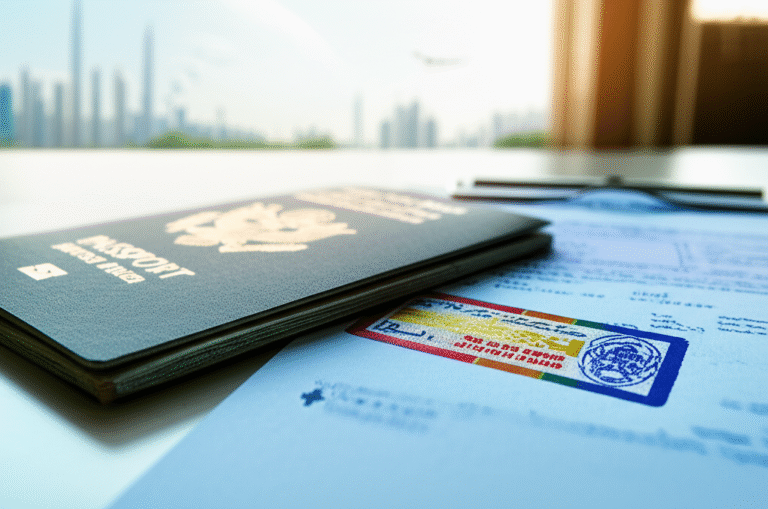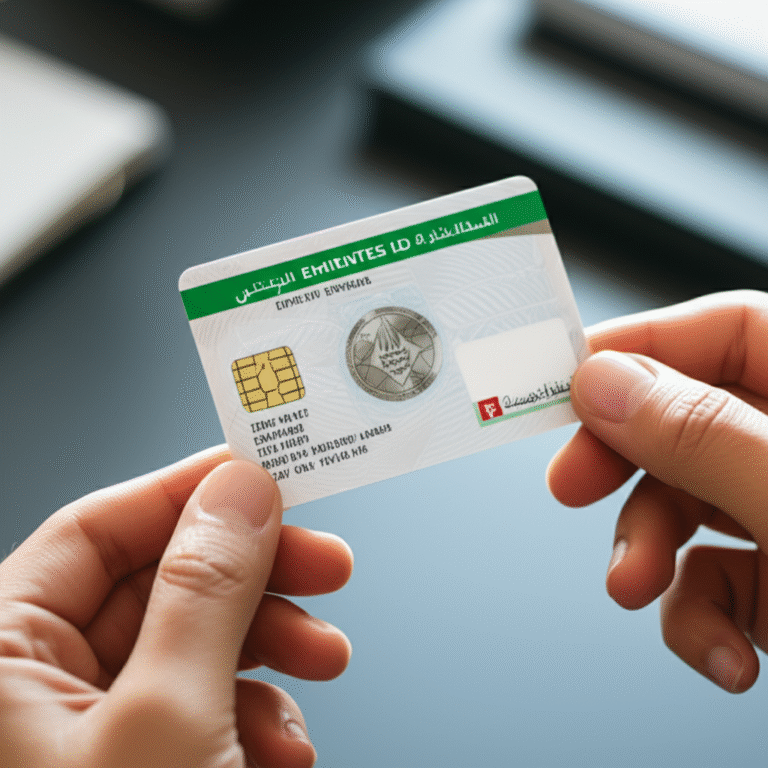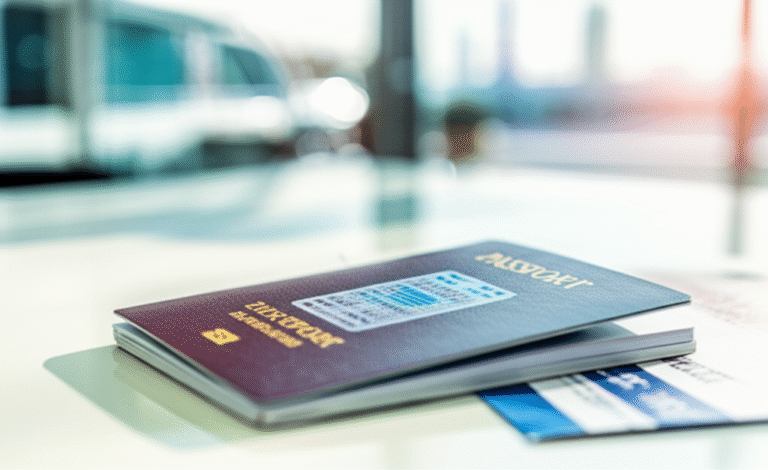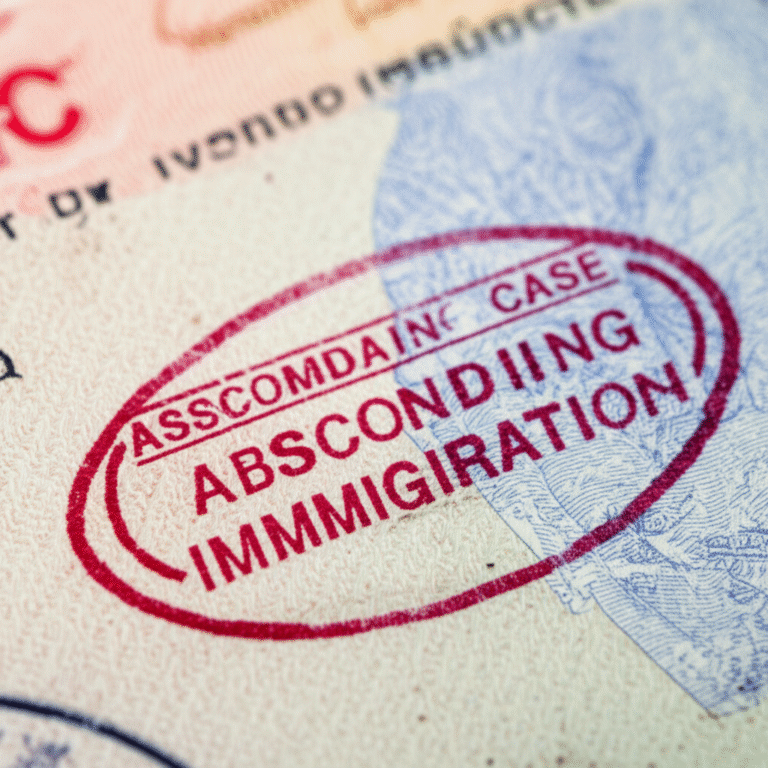How To Change Visa Status In UAE: Effortless Guide

Easily navigate the process of changing your visa status in the UAE with our step-by-step guide, covering all essential requirements and tips to ensure a smooth transition.
Moving to a new country or extending your stay is an exciting adventure, and the UAE offers fantastic opportunities for many. Sometimes, though, your circumstances change, and you might find yourself needing to switch from one type of visa to another – perhaps from a visit visa to a residence visa, or even a job seeker visa. It’s a common situation, and while it might seem a little daunting at first, it’s entirely manageable. At uaestayinn, we’re here to break down the entire process for you, making it as clear and stress-free as possible. Think of this as your friendly roadmap to successfully changing your visa status in the UAE!
Understanding Your Visa Status in the UAE

Before we dive into the “how-to,” it’s helpful to understand what “visa status” means in the UAE. Essentially, it refers to your legal right to be in the country. This is usually determined by the type of visa you hold – whether it’s for tourism, work, study, residency, or simply exploring opportunities. Each visa type comes with its own set of rules, validity periods, and specific procedures for entry and exit. Understanding your current status is the crucial first step in knowing what changes are possible and how to achieve them.
Why Might You Need to Change Your Visa Status?

Life in the UAE is dynamic, and so are people’s plans! Here are some common reasons why individuals might need to change their visa status:
- Securing Employment: You entered on a visit visa and have now found a job. You’ll need to transition to an employment or residence visa sponsored by your employer.
- Starting a Business: You might have a business idea and want to set up shop. This often requires a business or investor visa.
- Joining Family: If a family member is a UAE resident, they might sponsor you to live with them.
- Pursuing Education: Enrolling in a university or educational institution typically requires a student visa.
- Seeking Opportunities: UAE has introduced specific visas for job seekers and those with unique talents, allowing a stay after a previous visa expires or by converting from another type.
- Change in Employment: If you change employers while holding a residence visa, you might need to update your visa details or obtain a new one.
Whatever your reason, the UAE government has streamlined processes to accommodate these transitions.
The Golden Rules: Before You Start

Here are some fundamental things to keep in mind that will make your journey smoother:
- Check Your Current Visa Validity: Always know how much time you have left on your current visa. Overstaying can lead to fines and future entry bans.
- Understand the New Visa Requirements: Each visa type has specific documentation and eligibility criteria. Research thoroughly!
- Gather All Necessary Documents: This is the most critical part. Missing documents are the most common reason for delays or rejections.
- Be Patient and Persistent: Government processes can sometimes take time. Stay organized and follow up politely if needed.
- Stay Informed: Regulations can change. Always refer to the official sources for the most up-to-date information.
Step-by-Step Guide: How to Change Your Visa Status

The exact process can vary slightly depending on your nationality and the specific visa you are transitioning from and to. However, the general steps are quite consistent. We’ll cover the most common scenarios, focusing on changing from a visit/tourist visa to a residence or employment visa, as this is a very frequent requirement.
Step 1: Determine the New Visa Category
This is the very first and most crucial step. What kind of visa do you need? The UAE offers various residence visas, including:
- Employment Visa: For those who have secured a job offer.
- Investor/Partner Visa: For individuals establishing or investing in a business in the UAE.
- Family Visa: For dependents of UAE residents.
- Student Visa: For those enrolled in educational institutions.
- Golden Visa: For long-term residents with exceptional talent, investors, entrepreneurs, etc.
- Freelancer/Remote Work Visa: For individuals working independently or for companies outside the UAE.
- Remote Work Visa: For those working remotely for international companies.
For this guide, let’s assume you are transitioning from a tourist or visit visa to an employment visa, as it’s a widespread scenario.
Step 2: Obtain an Entry Permit (If Required)
In many cases, if you are inside the UAE on a visit visa and wish to switch to a residence visa (like an employment visa), you will need to obtain a specific Entry Permit for the new visa type before your current visit visa expires. This used to involve an “immediate cancellation” or “change of status” from within the country, but current regulations often require you to exit and re-enter on the new permit, or obtain the permit while still inside. The system is evolving, so verifying with the official entities is key.
Key Point: The UAE government has made it easier to change status internally for certain visa types to avoid mandatory country exits. However, this is subject to specific conditions and visa types. Always check the latest government advisories.
Where to Apply for Entry Permits:
- General Directorate of Residency and Foreigners Affairs (GDRFA): This is the primary authority for immigration matters in most Emirates (Dubai, Abu Dhabi, etc.).
- Federal Authority for Identity, Citizenship, Customs & Port Security (ICP): Oversees national identity and citizen services, as well as residency and visa processing across the UAE.
You can often initiate these applications online through their respective portals or apps.
Step 3: Medical Fitness Test
Once your entry permit is issued or you are transitioning internally, a mandatory Medical Fitness Test is required for most residence visas. You will need to visit an approved government health center or a private clinic authorized by the health authorities.
What to Expect:
- Blood tests
- Chest X-ray
The results will be sent directly to the immigration authorities electronically.
Step 4: Emirates ID Application
The Emirates ID is a mandatory identification card for all residents in the UAE. For a residence visa, applying for an Emirates ID is a concurrent step. You will need to visit an authorized typing center or GDRFA/ICP customer service center to submit your application, which includes biometrics (fingerprints and photograph).
Documents typically needed for Emirates ID:
- Passport copy
- Visa copy
- Passport-sized photographs (meeting specific requirements)
- Entry Permit (if applicable)
Step 5: Visa Stamping (Residency Visa)
This is the final step where your passport gets stamped with the new residence visa. This is done at the GDRFA or ICP office after all previous steps are successfully completed.
What happens:
- Your passport, along with all supporting documents and successful medical and Emirates ID applications, is submitted.
- Officials verify all information and approve the visa.
- Your visa is physically stamped into your passport, indicating the type of visa and its validity period.
Specific Scenarios & Considerations
Let’s look at a couple of common transitions:
Scenario A: Transitioning from Visit Visa to Employment Visa (Inside UAE)
This is one of the most common scenarios. If you’ve landed a job while on a tourist visa, your employer will typically handle much of this process for you. However, understanding it is beneficial.
- Job Offer & Contract: You must have a confirmed job offer and a signed employment contract.
- Employer’s Role: Your employer will usually apply for an Employment Entry Permit for you.
- Internal Change of Status: In many cases, the employer can facilitate an “internal change of status” or apply for the entry permit without you needing to exit the country immediately, provided your current visa is valid and the authorities allow it. This avoids the need for a separate country exit and re-entry.
- Medical Test & Emirates ID: Once the entry permit/new employment visa is approved, you will proceed with the medical fitness test and Emirates ID application.
- Visa Stamping: Your employer will then submit your passport for the final visa stamping.
Important Note: The ability to change status internally without exiting the country depends on the specific visa category and the policies in place at the time. Always confirm with the prospective employer and the immigration authorities.
Scenario B: Transitioning from Visit Visa to Job Seeker Visa
The UAE has introduced specific visas for job seekers. If your visit visa is expiring and you are actively looking for work, you might be able to convert your status to a Job Seeker Visa.
- Eligibility: You usually need to have been a graduate of a top-ranked university (globally or within the UAE) or possess specific skills.
- Application: This is typically applied for through the ICP or GDRFA portals.
- Duration: These visas are usually granted for a specific period (e.g., 6 months or a year) to allow you to find employment.
- Conversion: Once you secure a job, you can then convert this Job Seeker Visa into an Employment Visa, following the steps outlined above.
External Resource: For the most current information on job seeker and talent visas, refer to the official portal of the Federal Authority for Identity, Citizenship, Customs & Port Security (ICP): ICP UAE.
Scenario C: Transitioning from Employment Visa to Another Employment Visa (New Employer)
If you change employers, the process is generally smooth, with your new employer managing the transition.
- Resignation & Cancellation: Your current employment contract needs to be terminated, and your current residence visa and Emirates ID will be cancelled. Usually, there’s a grace period (e.g., 30, 60, or 90 days depending on your contract and visa type) after cancellation to either exit the country or secure a new visa.
- New Employer’s Sponsorship: Your new employer will apply for a new employment entry permit.
- Medical & Emirates ID: A new medical fitness test and Emirates ID application will be required.
- Visa Stamping: The new residence visa will be stamped in your passport.
Important Note on Grace Periods: The duration of the grace period after visa cancellation depends on your specific situation and the type of visa. It’s crucial to understand the exact terms with your employer and verify with immigration.
Key Documents You’ll Likely Need
While specific requirements vary, here’s a general list of documents that are frequently needed when changing your visa status:
| Document Type | Notes |
|---|---|
| Original Passport | Must be valid for at least 6 months. |
| Passport-Sized Photographs | White background, meeting UAE visa photo specifications. |
| Copy of Current Visa | If applicable. |
| Entry Permit for New Visa | Issued by GDRFA/ICP. |
| Medical Fitness Test Results | From an approved center. |
| Emirates ID Application Form/Receipt | Proof of application. |
| Original Emirates ID | For renewal or status change. |
| Employment Contract | For employment visas, attested by relevant authorities. |
| No Objection Certificate (NOC) | Sometimes required from the previous sponsor or employer, depending on the situation. |
| Trade License/Company Documents | For investor or sponsor visas. |
| Marriage Certificate/Birth Certificate | For family visas, attested and translated if necessary. |
Tip: Always have original documents and multiple copies of everything. Keep digital copies too!
Costs Involved
Changing your visa status involves various fees. These can include:
- Entry Permit fees
- Visa application fees
- Medical fitness test fees
- Emirates ID application fees
- Visa stamping fees
- Typing center service charges
The exact cost will depend on the type of visa, your nationality, and whether you use an agent. Typically, for an employment visa, the employer covers most of these costs, but it’s good to clarify this beforehand.
Where to Get Help and More Information
The UAE government prioritizes easy access to information and services. Here are your primary resources:
- Federal Authority for Identity, Citizenship, Customs & Port Security (ICP): The main federal body for residency and visa services. Their website and app are invaluable. Official UAE Government Portal.
- General Directorate of Residency and Foreigners Affairs (GDRFA): Each Emirate has its own GDRFA office, responsible for handling most visa and residency applications within that Emirate. Dubai’s GDRFA is particularly prominent.
- Approved Typing Centers: These centers are authorized to assist with government paperwork and online applications.
- Prospective Employer: If you are changing to an employment visa, your employer’s HR department will be your primary point of contact and support.
- uaestayinn: While we aren’t an official government body, we aim to provide clear, user-friendly guidance to make your journey easier!
Common Pitfalls to Avoid
Navigating bureaucracy can be tricky, but knowing common issues can help you sidestep them:
- Overstaying: This is the biggest no-no. Fines are substantial, and it can lead to re-entry bans. Always track your visa expiry date and grace period.
- Incorrect Documentation: Missing, incomplete, or incorrect documents are the most frequent cause of application rejection or delay. Double-check everything!
- Applying for the Wrong Visa: Ensure the visa category you’re applying for truly matches your purpose of stay.
- Not Understanding the Process: Winging it can lead to costly mistakes. Reading guides like this, and consulting official sources is crucial.
- Relying Solely on Third-Party Information: Always cross-reference information with official government websites, as regulations change.
Frequently Asked Questions (FAQ)
Q1: Can I change my visa status from within the UAE?
Yes, in many cases, you can change your visa status from within the UAE without needing to exit the country. This applies to transitions like moving from a visit visa to an employment or residence visa, especially when facilitated by a sponsor (like an employer). However, specific rules and eligibility criteria apply, so always verify the latest government regulations.
Q2: How long does it take to change visa status in the UAE?
The processing time can vary significantly depending on the type of visa, the volume of applications, and the efficiency of the authorities. Generally, it can take anywhere from a few days to a few weeks. The internal change of status process can be quicker if all documents are in order, while a full application with entry permits might take longer.
Q3: What happens if my current visa expires before I change my status?
If your visa expires and you haven’t initiated or completed the process to change your status, you will technically be considered an overstay. This can lead to significant fines and potential bans from re-entering the UAE. It’s essential to start the process well before your visa expires or to understand the grace period afforded to you.
Q4: Does my employer handle all the visa change process?
For employment visas, your employer is responsible for initiating the process and will typically manage most of the application, including obtaining the entry permit, medical tests, and visa stamping. However, you will need to provide all necessary personal documents and cooperate with the required procedures, such as attending medical tests.
Q5: Can I change my visa status if my current visa is cancelled?
Yes, if your current visa (e.g., employment visa) is cancelled, you are usually granted a grace period (e.g., 30, 60, or 90 days) to either exit the country or secure a new visa. During this grace period, you can apply for a new visa type or an entry permit for a new residence visa.
Q6: What is the difference between an entry permit and a residence visa?
An Entry Permit is a pre-approval that allows you to enter the UAE or change your status from within the country for a specific purpose (e.g., employment, study). Once you are inside the UAE and complete all requirements (medical, Emirates ID), this permit is converted into a formal Residence Visa, which is stamped in your passport and allows you to live and work (or study) in the UAE for a longer duration.
A Smooth Transition is Within Reach!
We know that dealing with visa processes can sometimes feel overwhelming, but by breaking it down into manageable steps and staying organized, you can navigate the change of your visa status in the UAE with confidence. Remember to always rely on official government sources for the most accurate and up-to-date information, and don’t hesitate to seek assistance from your sponsor or authorized centers when needed. The UAE is a land of opportunity, and ensuring your legal status is in order is the first step to fully enjoying your time here. We hope this guide has provided clarity and reassurance for your journey!





